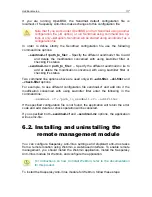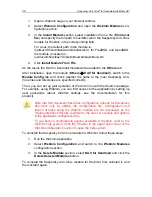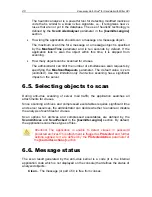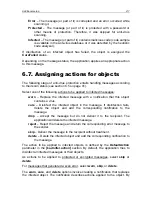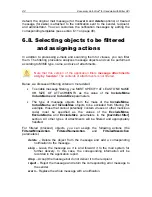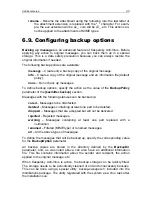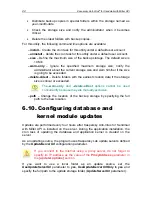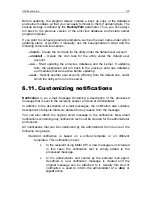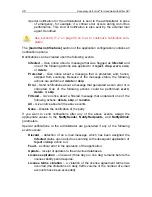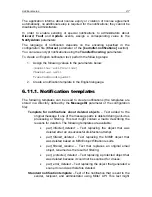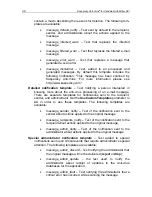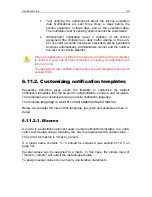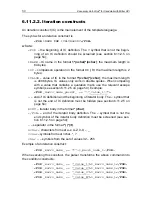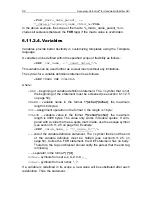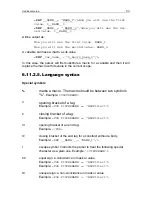
Additional setup
51
These condition constructs are parsed sequentially.
Thus, iteration constructs are used to distinguish both the single and multiple
values of a macro.
For example, if the macro
%FILTERNAME%
has the values of
KAVFilter1
,
KAVFilter2
,
KAVFilter3
, and
SimpleFilter
, then
the construct:
<FOR
FILTERNAME == "KAVFilter1"
>
%FILTERNAME%
</FOR>
will produce the text:
KAVFilter1
the construct:
<FOR
FILTERNAME `= "KAVFilter?"
>
%FILTERNAME%,
</FOR>
will produce the text:
KAVFilter1, KAVFilter2, KAVFilter3
the construct:
<FOR
FILTERNAME
!= "KAVFilter2"
>
%FILTERNAME%,
</FOR>
will produce the text:
KAVFilter1, KAVFilter3, SimpleFilter
the construct:
<FOR
FILTERNAME
!= "KAV*"
>
%FILTERNAME%,
</FOR>
will produce the text:
SimpleFilter,
6.11.2.3. Scope of visibility for an iterative
statement
Any iteration construct can have sub-macros, whose values are defined within
the scope of visibility for the parent construct only. Iterative statements can be
used not only to output particular values of particular macros, but also to define
the scope of visibility of sub-macros.
The scope of visibility of a sub-macro is defined by the start and end tags of the
condition construct:

